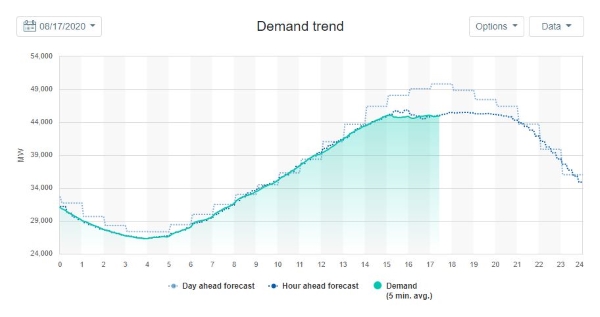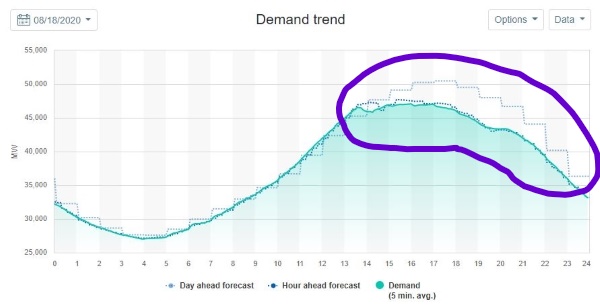CAISO leadership says that we are looking at up to a 4400 MW shortfall between 4-9pm tonight. That is about 3.3 million homes, or twice the size of the rolling blackouts in 2001, and much larger than either Friday or Saturday. (On Friday they requested that 1000 MW of demand be dropped, and 470 MW on Saturday.)
With so much publicity about the looming shortfall, they are seeing a somewhat better reduction in demand than they saw in the last few days, and are hopeful that the outage needed may be a little smaller. But it will still be massive.
The utilities will be deciding where the blackouts will occur. A typical rolling blackout period is one hour, but there is additional time needed to re-energize. So a typical outage will be around two hours.
Please, be prepared for an outage tonight. The most impacted period is projected to be around 7-8pm, but they anticipate blackouts may start as early as 4pm.
They are also forecasting a shortfall for tomorrow (Tuesday), but a smaller one (around 2300MW). It's not clear how much will happen in our cities. The CAISO spokesman said that load reductions are assigned in a pro rata manner to the utilities.
FWIW, this is mind-boggling to me. I listened to an hour-long Q&A with CAISO leadership, and there was no smoking gun, just a widespread heat event and the usual variability in renewables. If you are interested, you can see a slide presentation from CAISO this morning here. CAISO leadership said that to the extent we rely on imports to close the gap, we should attempt to secure them. They are working with the Public Utilities Commission on that.
They hope to install around 4GW of batteries in the next few years, and more beyond that. Grid-scale battery lead-time is apparently 12-18 months, though it depends on siting requirements. Batteries are not renewable, so I hope we can find cleaner alternatives as well. I also hope that we can get much more aggressive at encouraging flexible demand. It is by far the cheapest and cleanest option we have to balance the grid at times like this. For those who are curious, they said that historically Flex Alerts have led to a 400-500MW reduction in demand. I'm sure we can do better. I wish there were more focus on this.
Sorry for the non-blog-like posts, but I find this really surprising and, well, not good, not so much because of the impact on our cities, but because of what it says about the state's ability to plan and flex. We have to do better.







